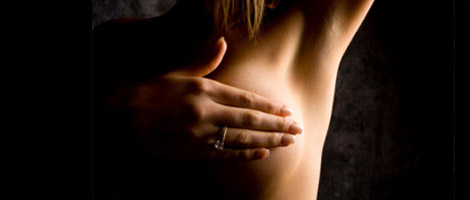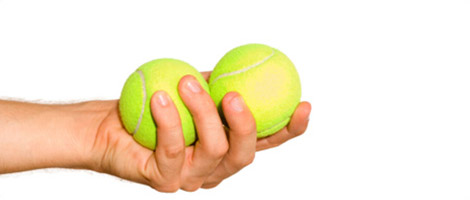
Self-Examination - Breast
Breast cancer is the second most commonly occurring type of cancer in women in America. Moreover, it is the most common cancer diagnosed among Canadian women [www.phac-aspc.gc.ca]. Although the disease is not completely understood by researchers, it is known is that early detection along with minimizing risk can decrease the probability of developing and suffering from it. The methodology of performing a breast self-exam is straightforward and will be detailed thoroughly in this article.
What is Breast Cancer?
It is defined by the National Cancer Institute as “cancer that forms in tissues of the breast, usually the ducts (tubes that carry milk to the nipple) and lobules (glands that make milk)”. Although breast cancer does occur in men, the probability is very low.
Why Do a Breast Self-Exam?
Conducting regular breast self-exams is important for a number of reasons. Early detection and treatment may save your life. Studies show that finding and treating breast cancer in its early stages can prevent death from this disease. The breast self-exam is quick, free, easy to perform, and does not require any outside assistance. Getting into the practice of regular self-exams will familiarize you with your breasts and improve awareness of any irregular changes in the tissue.
Risk Factors
Eliminating risk factors and embracing protective factors are also extremely important. It is recommended that women over the age of forty should have a breast examination with a trained health professional at least once every two years; however, if you present a higher than normal set of risk factors, the breast self-exam becomes even more of a priority and screening with a trained clinician also may need to occur more frequently.
High risk factors include, but are not limited to, the following: gender (because 99% of those affected by breast cancer are women), age, having a close relative with an incidence of this disease, obesity (as defined by the Body Mass Index measurement), experiencing mMenstruation before the age of twelve or menopause after the age of fifty five, having a first baby after the age of thirty - or never at all, never breastfeeding, and taking Hormone Replacement Therapy (HRT).
Moderate risk factors are those that less consistently increase the risk of cancer, or are suspected as possible contributors. Moderate risk factors generally relate to lifestyle choice, such as: smoking tobacco products, drinking more than one drink of alcohol per day, physical inactivity, eating a diet lacking in fruits and vegetables, and using birth control products.
What to Examine
Check the entire breast area, which includes the breasts, armpits, around the side of the chest, and along the tissue all the way up to the collar bone. Look at your breasts in the mirror rather than looking down at them. If you have larger breasts, make sure to lift them up and inspect the underside.
The Visual Inspection
A mirror in a well lit area is required for a visual inspection. Arrange yourself in front of it and look straight ahead. Perform your visual examination using all of the following body positions: sitting, standing, arms over the head, hands on hips, and leaning forward. Take a moment to look at your breasts in the mirror while in each of these positions from a side angle. These arrangements may seem like a lot of work but there is a purpose; they will change the way the breasts hang and will increase your chance of spotting any abnormality.
Look at your breasts and take note of the skin texture, shape, size difference, and contour of the nipple. Take note of anything that has changed in size, shape or skin texture. Don’t worry about any asymmetry or imperfection! The key thing is to look for is any deviation from what is usual for you, which is why it is important to perform this examination regularly. Study the breasts’ profile from every angle and take not of any unusual bulges or lumps that appear to stick out. Also, pay attention to any dimpling or puckering of the skin.
The Manual Inspection
The key to successful execution of the manual portion of the breast self-exam is frequent practice. Being familiar with what breasts normally feel like will give you insight into what is actually abnormal. The main things to feel for are bumps, lumps, thickening of the skin, and/or pain. It is possible that you sense better with one hand rather than the other, so compare what you feel with each hand with the other breast as a double-check or reference point.
Women’s breast tissue is normally somewhat thick and lumpy, but the degree of variation differs from person to person. Some people think that they won’t be able to distinguish what is normal from what is abnormal. Familiarizing yourself with the elements that make up the breast area, such as fat tissue, muscle, bones, lymphatic system and ducts, will help you feel more comfortable as you inspect it. It takes some practice but you will be able to differentiate a change in your tissue.
To conduct the manual breast self-exam, use the soft pads of the three middle fingers of the opposite hand of the breast that you are checking. Keep the fingers together as you apply pressure to the areas you’re inspecting. Utilize enough pressure so that you don’t skim over a lump but be careful not to press too hard as it’s possible to push a bump away from the area that you’re feeling. The motion of the fingers is always circular; place them on the skin, press gently, and rub in a circular motion until you feel satisfied that the area has had a good assessment.
Inspection Patterns
There are a number of patterns that can be used specifically to scan the breast area. These should be done while you’re in the standing position, as well as when you’re lying down on your back, and/or lying down on your side. This allows your breast tissue to shift so that you can feel the area more successfully. Experiment with all of the movements using the finger motion described in the last paragraph and choose the inspection pattern that feels most effective and comfortable. Remember to check the armpits, as well as the chest area underneath the collarbone.
Using the circle pattern, start at the outermost point of the breast and work your way around the perimeter of the breast. Once you reach the point where you started, close your circle in about an inch or so and go around the breast again. Continue with this pattern, making your rings smaller and smaller until you finally reach the areola. Repeat this on the other breast with the opposite hand.
With the clock pattern, visualize the breast with an imaginary clock on it. Starting at the outer edge of the breast where twelve o’clock would be, use your circular finger motion to examine the area of the breast along the path of a straight line toward the nipple area. Repeat this step as many times as necessary until you’ve checked over the clock face. Repeat this process on the other breast.
The last configuration, commonly called the grid pattern, involves moving your fingers up and down in columns from the top to the bottom of the entire breast. Starting at the breast tissue closest to the sternum, use your circular finger motion to sweep up and down across the grid until you reach the other side. Don’t forget to lift up the breast to inspect its underside. Some women prefer to use the grid pattern because it is an easier method of detecting changes in the breast tissue. The grid pattern starts from the area closest to the sternum, which contains the least amount tissue, and works towards the armpit, containing the thickest tissue.
Pointers
A helpful tip is to choose your preferred interval (once a month, once every two months, etc.) and mark it on your calendar. If your periods are irregular, if you don’t have periods any longer, or if you’re pregnant, do the breast self-exam on the marked day; adjust your day if you need to accommodate your menstrual cycle. Check your breasts about a week to ten days after you start your cycle so that they aren’t as tender. Try to stick to a consistent schedule so that you can detect changes that develop slowly.
One of the easiest and most convenient ways to manually inspect your breasts is while you’re in the bath or in the shower. Wet and soapy hands glide easily across the breasts and the fingers are also more sensitive. Lotion or personal lubricant can be used as a substitute if you prefer to check yourself outside of the shower.
When to Report to a Health Care Practitioner
If you experience any new or atypical pain, or notice any difference in size, shape, or texture of your breast, report to your health care practitioner. Additionally, if you notice any changes in the nipple area such as redness, leaking, dimpling, or puckering, be on the safe side and tell your doctor.
Is There A Downside To Performing A Regular Breast Self-Exam?
Unnecessary worry or anxiety is something you need to manage carefully. Some people prefer to avoid regular doctor’s checkups and self monitoring because they’re so afraid of coming across something unwanted. This method keeps you in the dark about your changing body and eliminates any possibility for timely intervention. For those who are fearful, consider the following fact; 80% of all breast changes are not cancerous! [www.breastselfexam.ca]
Some people might also be concerned with the costs associated with extra doctor visits. It may feel frustrating to experience fear and unnecessary expense only to find out it was all a false alarm; however, be assured that a false alarm is the best outcome possible. The more that you keep in tune with your breasts, the better you will become at spotting the difference between irregularities and normal fluctuations.
Final Thoughts
There is no guarantee that a breast self-exam alone lowers breast cancer death rate. The most effective way to protect yourself is by managing all risk factors, keeping in touch with the changes in your breasts, and attending regularly scheduled check-ups with your doctor. It should be an integral part of your overall breast health awareness.
